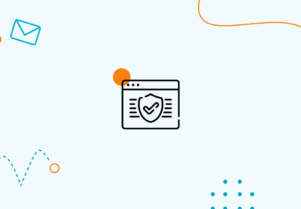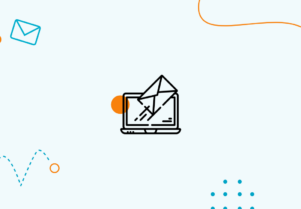Effective Campaigns with Email List Management Techniques
The effectiveness of your email campaigns isn’t solely determined by the content you send; it also hinges on the quality of your email list management.

In this guide, we’ll explore why managing your email list is crucial and outline 16 best practices to ensure your email campaigns are as effective as possible.
Why is Email List Management Important?
Ensures High Deliverability Rates
Poorly managed email lists can result in low deliverability rates, meaning your emails end up in spam folders rather than inboxes. Effective email list management ensures that your emails reach the intended recipients, thereby increasing the chances of engagement. A well-managed list can significantly improve your email deliverability, making sure your efforts don’t go to waste.
Enhances Engagement and Conversion
A well-managed email list allows you to segment your audience and send targeted messages, leading to higher engagement and conversion rates. It ensures that the right message reaches the right person at the right time. This level of personalization can dramatically increase the effectiveness of your email campaigns, turning potential leads into loyal customers.
Reduces Costs
Sending emails to unengaged or irrelevant recipients is not just ineffective; it’s also costly. Proper email list management helps you focus your efforts on a receptive audience, thereby reducing costs and increasing ROI. By concentrating on engaged subscribers, you can optimize your budget and achieve better results with fewer resources.
16 Best Practices for Effective Email List Management
1. Regularly Update Your List
Outdated email lists can lead to high bounce rates. Regularly update your list to remove invalid or inactive email addresses. Keeping your list up-to-date ensures that you’re reaching active and interested subscribers, which in turn improves your campaign metrics and overall effectiveness. Example: Use automated tools to scrub your list every quarter.
2. Segment Your List
Segmentation allows you to send targeted emails based on various criteria like demographics, purchase history, or engagement level. By segmenting your list, you can tailor your messaging to specific groups, increasing relevance and engagement. You can use the help of the best AI content writers for marketers out there to customize your message. This approach enables you to create more personalized and effective campaigns. Example: Divide your list into segments like ‘New Subscribers,’ ‘Active Customers,’ and ‘Inactive Customers’ to tailor your messaging.
3. Implement Double Opt-In
Double opt-in ensures that the subscriber genuinely wants to receive emails from you, which can improve engagement and deliverability. This method verifies the subscriber’s intent and helps you maintain a clean, high-quality email list. It also protects you from spam complaints and potential legal issues. Example: Send a confirmation email after a user subscribes to verify their email address.
4. Monitor Engagement Metrics
Keep an eye on metrics like open rates, click-through rates, and conversion rates to gauge the effectiveness of your campaigns. Monitoring these metrics can provide valuable insights into subscriber behavior and campaign performance. Use this data to refine your strategies and make data-driven decisions. Example: Use analytics tools to track how different segments engage with your emails.
5. Personalize Content
Personalization can significantly boost engagement. Use the subscriber’s name, location, or other personal information to make emails more relevant. Personalized emails are more likely to be opened and acted upon, enhancing the overall effectiveness of your email marketing efforts.You can also create personalized QR codes which take users back to their abandoned cart or a dynamic page of their favorite products.
Additionally, be sure to humanize your content if you’re employing AI to craft your emails. Example: Use dynamic content to personalize product recommendations based on browsing history.
6. Re-Engage Inactive Subscribers
Don’t ignore subscribers who haven’t engaged with your emails for a while. Create re-engagement campaigns to win them back. These campaigns can rekindle interest and potentially turn inactive subscribers into active customers again. It’s a cost-effective way to improve your list quality without having to acquire new subscribers. Example: Send a ‘We Miss You’ email push notification with a special offer to inactive subscribers.
7. Maintain a Consistent Sending Schedule
Consistency helps subscribers know when to expect emails from you, which can improve open rates. A consistent schedule establishes a routine, making it more likely that your emails will be anticipated and opened. This can lead to increased engagement and better overall campaign performance. Example: Send a weekly newsletter every Monday at the same time.
8. Test and Optimize
Regularly A/B test different elements like subject lines, email copy, and CTAs to find what resonates most with your audience. A/B testing allows you to fine-tune your campaigns for maximum effectiveness. By continually optimizing, you can ensure that your email marketing remains dynamic and responsive to subscriber preferences. Example: A/B test different subject lines to see which one yields higher open rates.
9. Comply with Regulations
Ensure that you’re compliant with email regulations like GDPR and CAN-SPAM to avoid legal issues and have a solid DMARC policy to stay safe from cyberattacks. Compliance is not just a legal necessity but also a way to build trust with your subscribers. Being transparent about your email practices can enhance your brand’s reputation and credibility. Example: Include an unsubscribe link in every email.
10. Use a Reliable Email Service Provider
Choose an email service provider that offers robust features, high deliverability rates, and excellent customer support. A reliable provider can be a valuable partner in your email marketing efforts, offering the tools and insights needed for success. Make sure to choose one that aligns with your business needs and goals. Example: Research and choose a provider known for high deliverability and robust analytics.
11. Implement Email Automation
Use automation to send timely and relevant emails based on subscriber behavior or milestones. For instance, use nonprofit marketing automation for segmenting your donors and sending personalized donation requests based on their previous giving history and interests.Automated emails can save you time and effort while ensuring that your subscribers receive the right message at the right time. This can lead to higher engagement rates and more effective campaigns. Example: Set up automated welcome emails for new subscribers.
12. Offer Value in Every Email
Each email should offer something valuable to the subscriber, whether it’s information, entertainment, or a special offer. Providing consistent value can help you build a loyal subscriber base that is more likely to engage with your brand. Over time, this can lead to increased customer retention and higher lifetime value for each subscriber. Example: Include useful tips or how-to guides related to your product or industry.
13. Clean Your List Regularly
Regular list cleaning helps remove unengaged subscribers, reducing costs and improving metrics. A clean list ensures that you’re only sending emails to people who are interested and engaged, thereby improving your overall campaign performance. It also helps you avoid being flagged as spam, which can severely impact your email deliverability. Example: Use list-cleaning services to remove subscribers who haven’t engaged in the past six months.
14. Track Unsubscribes and Complaints
Monitor unsubscribe rates and complaints to identify issues and opportunities for improvement. High unsubscribe rates can be a red flag, indicating that your content may not be resonating with your audience. If that is the case, you can use a content idea generator and specify your target audience to whip up ideas for email campaigns that may be more relevant and interesting. By tracking these metrics, you can make necessary adjustments to your content and strategy. Example: Conduct exit surveys for unsubscribers to gather feedback.
15. Leverage Social Proof
Social Media has become a prominent place to gain reviews about a brand. So, ,include testimonials, reviews, or user-generated content in your emails to build trust and credibility. Social proof can significantly influence a subscriber’s perception of your brand and their likelihood to engage with your emails. It adds an extra layer of trust, making subscribers more likely to take the desired action. Example: Feature customer testimonials in your product promotion and post-event emails.
16. Analyze and Adapt
Regularly review your email campaigns’ performance and adapt your strategies based on the insights. Continuous analysis and tracking using campaign management platforms will allow you to identify what’s working and what needs improvement. By being agile and willing to adapt, you can keep your email marketing efforts effective and relevant. Example: If a particular type of content is consistently underperforming, consider replacing it with something more engaging.
Conclusion
Effective email list management is the backbone of successful email marketing campaigns. By implementing these 16 best practices, you can ensure that your emails not only reach the right inboxes but also engage and convert your audience. With proper management, your email list can become one of your most valuable marketing assets, driving long-term success for your business.





